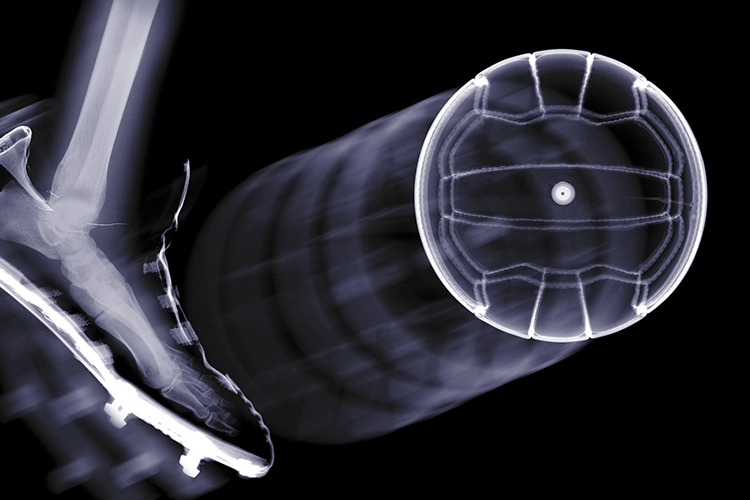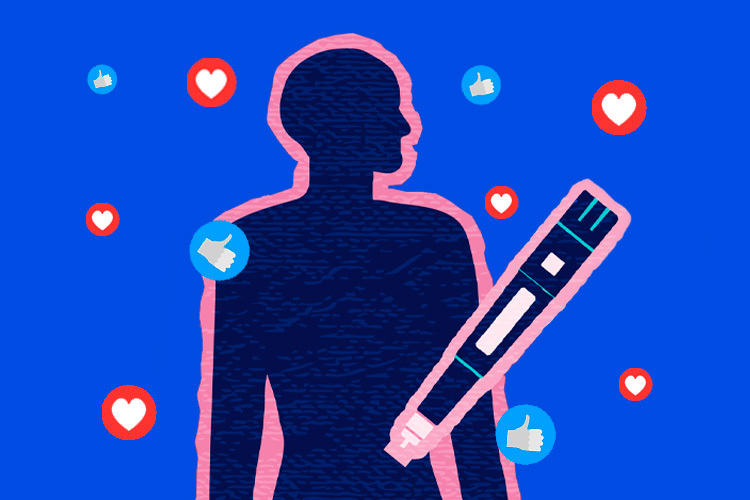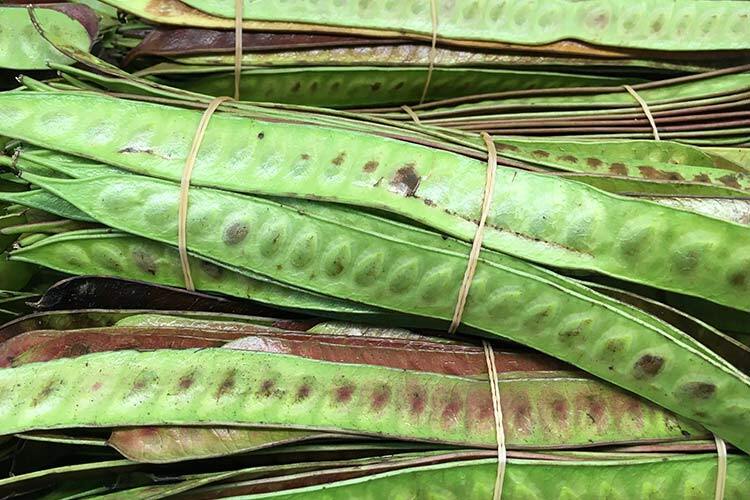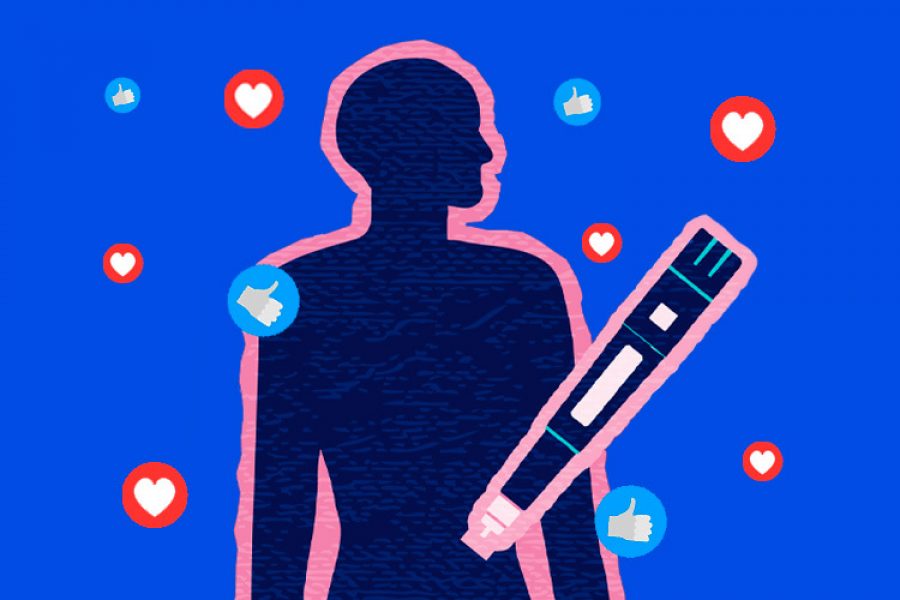By Helen Yarimet Lorenzo-Anota, Antonio Sancén Moreno, Omar Lozano
In the ongoing search for effective obesity treatments, a promising molecule has recently emerged: cannabidiol (CBD). This compound has gained attention due to its potential therapeutic benefits without the psychotropic effects associated with other substances derived from the Cannabis sativa plant.
Interest in the use of CBD is based on its close relationship with the endocannabinoid system, one of the body’s main cellular communication systems. This complex signaling network is crucial in regulating metabolism and essential physiological functions such as appetite and energy balance. (1)
This relationship has attracted the attention of multiple scientific groups for the application of CBD in treating obesity, raising a critical question: Are there unexplored alternatives with untapped potential in CBD?
Obesity and CBD
At the Institute for Obesity Research, one research line focuses on studying the effects of CBD on adipose tissue cells, exploring their molecular and functional characteristics.
The main findings of the research have shown that CBD modulates the expression of genes associated with improving the function of adipose tissue cells, favoring fat management by regulating triglyceride production and reducing inflammation. These effects have been observed in research protocols but have not yet been studied concerning commercial product use.
This ongoing research supports the application of CBD to treat obesity and opens two fields of study: How do the cells that comprise adipose tissue respond when stimulated with CBD? And how could this impact obesity treatment?
When treating obesity, we must reduce body fat — clarifying that fat is necessary for life, but it needs to be reduced in the context of obesity as a disease. This can be achieved by eliminating adipose tissue cells (inducing cell death), inhibiting their proliferation, or modulating the differentiation process to improve their function.
ABCs of Obesity
Our research aims to contribute to the knowledge of adipose tissue signaling by studying white adipocytes, cells specialized in storing energy as fat. These cells play a crucial role in the body’s metabolism and energy regulation and make up 90% of adipose tissue.
The remaining 10% of this tissue comprises two other entities: preadipocytes and macrophages. The former are precursor cells to adipocytes, and the latter are immune system cells involved in defense against infections, regulation of inflammation, and tissue repair.
Our results demonstrated that after three days of exposure to CBD treatment, neither preadipocytes nor adipocytes showed impairment in viability or proliferation.
This is in addition to our study showing that CBD influences the accumulation of lipid droplets, one of the main indicators of fat accumulation, and triglycerides, the most common type of fat in the body. It also increases the genes expressed in brown adipocytes, such as PPARγ and PGC1α.
Brown adipocytes are distinctively colored because of their high iron concentration. Unlike white adipocytes, which store energy as fat, brown adipocytes can generate heat, making them essential for regulating body temperature and energy metabolism.
The finding suggests that with the increase of these genes, PPARγ and PGC1α, cells change their function to use triglycerides to generate heat predominantly, thus favoring caloric expenditure. This new function is distinguished by its high capacity to utilize lipids compared to white adipocytes, aiming to generate more energy manifested as heat. (2)
This suggests CBD promotes adipose tissue cells to utilize fats more effectively, thereby supporting weight loss.
The Controversial Cannabis
Other research groups have also demonstrated the modulatory properties of CBD that could influence weight loss, particularly because it stimulates the effective utilization of fats and lipids. (3)
Currently, CBD has been the subject of prominent research exploring its effects on chronic pain relief and inflammation in patients with arthritis and cancer patients, and in the treatment of depression and anxiety. (1,3)
Despite various clinical studies confirming the efficacy of CBD, so far, few medications use this extract. One is Epidiolex (1,4), which has shown significant advances in clinical trials, especially in the treatment of seizures (4), and nabiximols, specifically Sativex, a combination of tetrahydrocannabinol (THC) and cannabidiol has shown a good response in managing chronic pain in patients with neuropathy and cancer (5).
Despite our country’s long-standing tradition of naturalistic and herbal medicine, CBD’s clinical applications remain limited. This limitation stems from its origin in a plant mired in controversy, which has resulted in diverse opinions and perspectives that have impeded its use.
This led to several reviews of scientific studies, resulting in Mexico’s 2017 approval of cannabis use for medicinal and scientific purposes in the General Health Law (6). This reflects an openness to study molecules with therapeutic potential, among other applications such as obesity.
Obesity is a prominent health challenge in the 21st century and is classified as an epidemic by various organizations. In Mexico, 81.0% of the adult population has experienced abdominal obesity, according to the 2023 National Health and Nutrition Survey. This translates into a cost that exceeds the capacity of our country’s health system.
The approach to treating obesity is multidisciplinary, focusing on inducing changes in the patient’s body composition, primarily adipose tissue. These options also include motivational approaches to modify behaviors and lifestyles, pharmacological interventions affecting metabolism or digestion, and surgical procedures that alter anatomy to limit caloric intake. (7)
Although these methods have achieved certain successes, they have not been completely effective in curbing global obesity. These strategies still face significant challenges, such as non-invasive therapies that are effective but very slow, with possible uncomfortable side effects ranging from headaches to addiction or heart problems.
While surgical treatments are quick, they come with unwanted effects, such as food restrictions or chronic gastritis, that limit their widespread acceptance. Additionally, these schemes are significantly limited by the social aspects that accompany them. Therefore, new strategies have been designed to combat it by regulating the cellular components that make up adipose tissue, as CBD does.
While CBD has shown promising results in laboratory cell models, we are still evaluating its potential application in clinical trials for treating obesity in adults. Positive outcomes from these trials could pave the way for CBD as an alternative treatment for obesity, a multifactorial disease that can manifest at various life stages, including childhood.
Proposed research continues to investigate different treatments for obesity in its early stages, contributing to finding solutions to the socioeconomic repercussions associated with this disease.
References
1. Corroon, J., & Felice, J. F. (2019). The Endocannabinoid System and its Modulation by Cannabidiol (CBD). Alternative Therapies in Health & Medicine, 25.
2. Le Foll, B., Trigo, J. M., Sharkey, K. A., & Le Strat, Y. (2013). Cannabis and Δ9-tetrahydrocannabinol (THC) for weight loss?. Medical hypotheses, 80(5), 564-567.
3. Parray, H. A., & Yun, J. W. (2016). Cannabidiol promotes browning in 3T3-L1 adipocytes. Molecular and cellular biochemistry, 416, 131-139.
4. Abu-Sawwa, R., Scutt, B., & Park, Y. (2020). Emerging use of Epidiolex (cannabidiol) in epilepsy. The Journal of Pediatric Pharmacology and Therapeutics, 25(6), 485–499.
5. Boivin, M. (2021). Nabiximols (Sativex®). In: Narouze, S.N. (eds) Cannabinoids and Pain. Springer, Cham.
6. SECRETARIA DE SALUD.Ley General de Salud y del Código Penal Federal. DIARIO OFICIAL. https://www.diputados.gob.mx/LeyesBiblio/ref/lgs/LGS_ref107_19jun17.pdf
7. Martínez Atienzar LI, Jiménez Espinosa A, Tarraga Marcos L, Madrona Marcos F, Tárraga López PJ. Obesidad: una epidemia en la sociedad actual. Análisis de los distintos tipos de tratamiento: motivacional, farmacológico y quirúrgico. JONNPR. 2019;4(11):1112-54. DOI: 10.19230/jonnpr.3209
Authors
Omar Lozano. Professor-Researcher at the Institute for Obesity Research and the School of Medicine and Health Sciences at Tecnológico de Monterrey. His research focuses on developing advanced, efficient, and safe materials for delivering therapeutic and diagnostic compounds for cardiometabolic diseases. He has written 46 scientific and outreach articles (h-index: 20), 4 patents, and 2 book chapters. He is a member of Mexico’s National System of Researchers, Level 2, and a Chargé de Recherche in Belgium. As an entrepreneur, he co-founded a company and a startup dedicated to advancing next-generation therapies.
Helen Yarimet Lorenzo Anota. Ph.D. in Immunobiology, UANL. Currently, a postdoctoral researcher at the Institute for Obesity Research, Bioengineering and Medical Devices Unit, at Tecnológico de Monterrey. Her research focuses on developing novel systems for the efficient delivery of anti-obesogenic molecules in in-vitro models, particularly on cells derived from adipose tissue, including preadipocytes, adipocytes, and immune cells. She is the author of 7 scientific articles, 6 as the first author (h-index: 4). Member of the National System of Researchers, Level I, since 2023.
José Antonio Sancén Moreno. Surgeon graduated from the UVM School of Medicine, Class of 2022. Holds diplomas in Human Sexuality and Optimal Management of Patients with Diabetes from La Salle University. He has experience in prestigious institutions such as the Swiss Hospital, Ginequito, and the Institute for Obesity Research at Tecnológico de Monterrey. Currently, he is a private physician at the Sancén Medical Center





















